Book Review: Dinosaur Art: The World’s Greatest Paleoartists
Posted 8 years ago by Rob Lammle Books
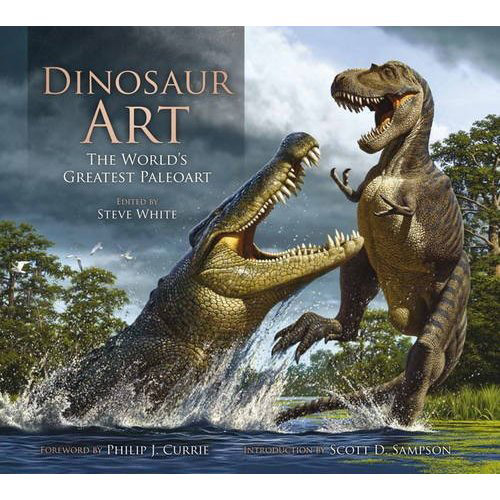
I was born in a time that has since become known as the “Dinosaur Renaissance”, a period that arguably began in 1975 when paleontologist Robert Bakker, the bearded, hippy-looking guy with the long hair and cowboy hat that we all know from PBS and the Discovery Channel, published an article in Scientific American that gave the era its name. It was here that many people first heard about dinosaurs being far different from the way they had previously been portrayed – as large, sluggish, rather boring lizards. Bakker and others like him posited that dinosaurs were in fact warm-blooded, social, vibrant, and voracious creatures that shared more characteristics with modern day birds than they did crocodiles and turtles.
Once dinosaurs became more than just over-sized iguanas, educational book publishers sat up and took notice. Here was a way to make science cool again; probably for the first time since the space race. So they started cranking out books for kids with garish, almost comic book-like covers of dinosaurs that were based on these newly-presented ideas. It worked. And as a kid born the same year “Dinosaur Renaissance” was published, my early childhood was inundated with books, toys, cartoons, games, and everything else imaginable that starred these “terrible lizards”.
I’ve always been more of a visual learner, so while I found the information about the eating habits of the Diplodocus to be interesting, I was naturally more drawn to the artistic side of these dinosaur books. I marveled at the exciting poses, the inevitable human/dinosaur scale drawings (though my favorites were always the ones where they used cars instead of people), and, more importantly, seeing the wildly diverse and fascinating forms of these long-extinct creatures. I can’t say that I knew any of the artists’ names, but I can tell you that because of them I could name more dinosaurs at five years old than most adults could (or still can).
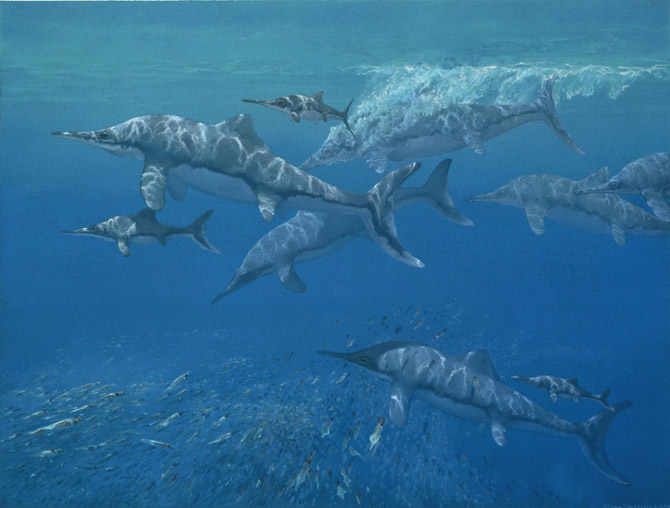
Which is why I was especially excited to learn about the new coffee table book, Dinosaur Art: The World’s Greatest Paleoart, by Titan Books. While this could be just any other art book, like the sedimentary rock most fossils are found in (metaphor!), there are many different layers here that make this an interesting book for dino lovers of all ages.
Right there on the surface, of course, are the pages and pages of artwork. There’s no shortage of awesome here, with nearly every page having some type of art to absorb and appreciate. Many pages feature full-page – or even full-spread – bleeds, so the art runs off the page, providing you with a wonderful view of the artwork. And most of these are not your old school, drab, green and brown dinosaurs anymore. These are dynamic creatures with an almost shocking amount of diversity that will have you stopping to gawk at nearly every picture.
The artists and their work are just as varied as the creatures they depict. Some of my favorites include Gregory Paul, one of the most influential paleoartists ever, whose first-hand drawn anatomical studies have become the basis for many artists since. Luis Rey’s work is almost garishly colorful, but the images provide such an interesting contrast to the old ways of seeing dinosaurs that you can’t help but admire them for pushing the envelope. Perhaps one of my favorites is the work of John Conway, who is almost the antithesis of Rey, in that his pieces are very subdued, almost flat, with a vaguely Asian simplistic influence. Although these were some of my favorites, there’s not a bad one in the bunch.
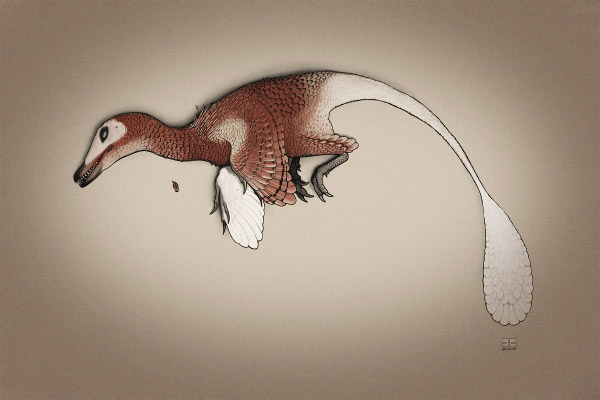
Of course the diversity is also shown in the mediums used by these artists. You’ll see plenty of pencil sketches, as well as the incredibly-detailed oil paintings that we’ve come to know since the dawn of the Dinosaur Renaissance. But the impact of digital media, like digital painting and digital photo composition, is also highlighted. With all of these mediums, you get a really great look at the past, present, and future of paleoart.
There are also quite a few “in-production” pieces and anatomy studies to let you see how the artists work towards the final piece. Some of my favorite behind-the-scenes images, though, are the progression pictures, showing how a piece has had to be redrawn over time as new scientific data is made available. The whole thing makes for a pretty fascinating glimpse into the creative process.
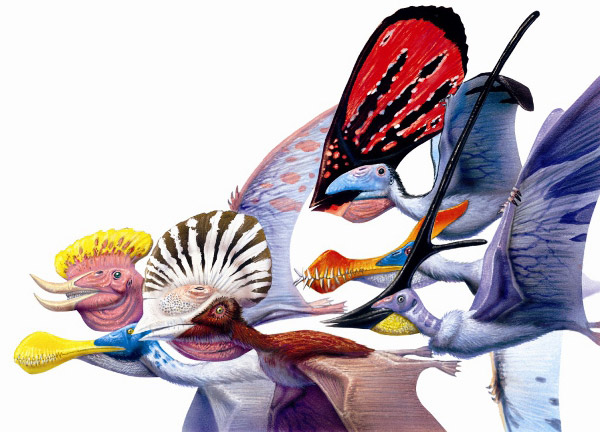
Speaking of which, if you dig a little deeper (metaphor!), you’ll find that each of the 10 artists is interviewed for the book, where they discuss everything from influences, inspiration, techniques, and the importance of extensive anatomical research. Not only is this a great place to learn how they work, but it also gives readers the opportunity to learn about some of the other important names in the paleoart field. You can easily expand your horizons with a few Google Image Searches of those names, making this a great primer that can lead to a larger world of artists to see and enjoy.
Finally, there’s some hard science here to boot. Many times the artist and the interviewer (presumably editor Steve White) discuss the way new discoveries impact the artwork. You’ll hear quite a few artists talk about how the now-prominent theory of feathers/proto-feathers and courtship markings has made them reassess – and sometimes revise – their work to a large degree. There’s also a lot of background on the unusual physical structures of these giant beasts, as well as a cultural and scientific history of many well-known species.
The only negative I can think of is that the book is a dinosaur drawing boy’s club. Admittedly, there aren’t many women in the field of paleoart, but they are out there. It would have been nice to include at least one woman in the line-up, such as Karen Carr, a regular contributor to the Smithsonian Institute and Chicago’s Field Museum, to get a slightly different perspective on the artform.
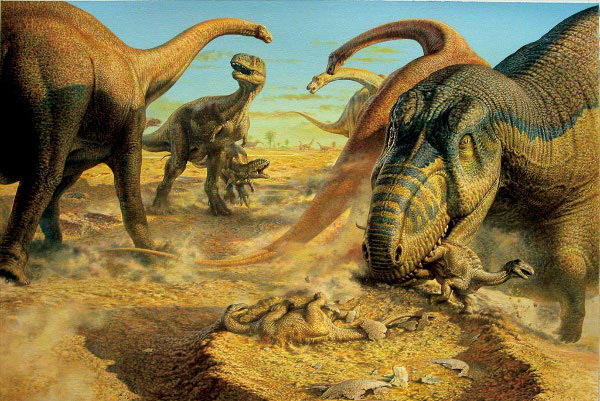
If you’re anything like me and your interest in dinosaurs was stirred by the cool pictures in all those books you checked-out from the elementary school library, then there’s a lot to love with Dinosaur Art. The artwork is beautiful and varied, the interviews with the artists are informative and insightful, and you’ll even get a few paleontology lessons scattered throughout. Best of all, if you have any little dinosaur hunters in the house, this book will keep them enraptured for hours as they pore through the pages of dino art. Who knows? Maybe this will be the book that inspires them to lead the next dinosaur renaissance.
Dinosaur Art: The World’s Greatest Paleoart is available at Amazon.com, BN.com, and your local bookstore.
-
ShezCrafti